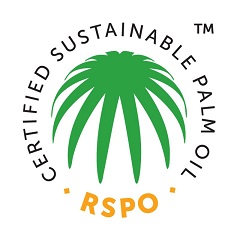|
Nagymarosi 22
A specie grown in the clay soil of southeastern Hungary; has a medium-sized, sphere-shaped top. Yields a lot of fruits: on average, 44% of the shoots produce 1.3 cupules. This species ripens the earliest, at the end of September. It has very large fruits (12.4 cm3), of which largest circumference is 39.8 mm. On average, there are 2.1 nuts per cupule, 18% of which are round, and about 71% are flattened on one side. The fruits have light, smooth, and thin hulls with relatively large seals (seals are the parts of the chestnut fruit that connect the nuts to the cupules). They taste sweet and aromatic, the color of their flesh is light yellow, and they can be stored easily. This specie can be effectively grown in the drier and warmer southern areas; i.e. it prefers fertile topsoil. Since it ripens earlier than the rest of the species, they can be sold at pre-season markets, and their harvest time period can be spread out. Although they ripen early, they are of
excellent quality.
Nagymarosi 37
A specie evolved in the northern areas. It has a rapid growth rate with a high-shooting top. Yields a lot of fruits: on average, 51% of the shoots produce 1.5 cupules. This specie ripens late in October. It has very large fruits (10.8 cm3), of which largest circumference is 38 mm. On average, there are 1.6 nuts per cupule, 13% of which are round, and about 68% are flattened on one side. The fruits are characteristically cone-like, and have light brown, fine-textured, easily peeled hulls. Their flavor is rich, and the color of their flesh is brownish-yellow. They are very easily stored. This specie can be planted in nutrient-rich topsoil in evenly cool areas. The late ripening season and good storage capability of this particular specie can extend the time period it can be sold.
Nagymarosi 38
A specie evolved in the northern areas. It has a medium growth rate. Regularly yields a lot of
fruits (42% of the shoots produce 1.6 cupules), and rapidly ripens in October. Its fruits are very large (11.3 cm3), of which largest circumference is 37.8 mm. In its cupules there are 1.8 nuts on average, of which 76% are flattened on one side. Their brownish-yellow, shiny (not ribbed), thin, and fine-textured hulls don dark stripes, have relatively large seals, and are easily peeled. They have a brownish-brown color flesh and are rich in flavor. They are very easily stored. This specie can be planted in thick topsoil in evenly cool areas. The value of this specie is similar to that of the Nagymarosi 3. However, the Nagymarosi 38 ripens earlier; therefore, the two species can be planted in the same areas.
Kőszegszerdahelyi 2
A specie evolved in crystal-like, rocky, shallow forest soil in the southeastern areas. It has medium-sized, canopy-like foliage, and its leaves are characteristically thick, leather-like. Yields a lot of fruits: on average, 53% of the
shoots produce 1.2 cupules. This specie ripens in mid-October, and has very large fruits (12.6 cm3), of which largest circumference is 37.2 mm. In the fruits’ cupules there are 1.3 nuts on average, of which 39% are round, and about 57% flattened on one side. Their hulls are dark brown, shiny, and medium thick, while their flesh is light brown and rich in flavor. This specie can be planted in the highlands. Excellent quality.
Kőszegszerdahelyi 29
A specie evolved in crystal-like, rocky, shallow forest soil in the southeastern areas. It has large, spread-out foliage. Regularly yields a lot of fruits: on average, 80% of the shoots produce 1.6 cupules. This specie ripens in mid-October, a few days later than Kőszegszerdahelyi 2 does. Its fruits are medium-sized (9.8 cm3), of which largest circumference is 36.7 mm. In the fruits’ cupules there are 1.6 nuts on average, of which 21% are round, and about 67% flattened on one side. Their hulls are
yellowish-brown, medium thick, easily peeled, while their flesh is yellowish-brown and has a rich, sweet taste. This specie can be planted in the highlands. Excellent quality.
Iharosberényi 2
A specie evolved in Transdanubia’s yellow soil. It has large, spread-out foliage, and yields a lot of fruits: on average, 52% of the shoots produce 1.9 cupules. This specie ripens fast in early October – and sometimes as early as the end of September. It has very large fruits (12 cm3), of which largest circumference is 36.7 mm. In the fruits’ cupules there are 2.2 nuts on average, of which 24% are round, and about 70% flattened on one side. Their hulls are dark brown, thick, and easily peeled. Their flesh is light brown in color, and have an intense flavor (domestic consumers love it). This specie ripens early, and it produces a lot of excellent-quality fruits in fertile yellow soil.
Iharosberényi 29
A specie
evolved in Transdanubian yellow soil. It has medium-sized, spread-out foliage, and yields a lot of fruits: on average, 46% of the shoots produce 2 cupules. This specie ripens late in the second third of October, and has very large fruits (11.4 cm3), of which largest circumference is 36.7 mm. In the fruits cupules there are 2.3 nuts on average, of which 8% are round, and about 76% flattened on one side. Their hulls are brown, smooth, shiny, medium thick, and easily peeled. Their flesh is light brown in color, and they have an intense flavor. As a result of this specie’s late ripening period, both its harvest and sales can be spread out. In fertile yellow soil, it is capable of producing a lot of excellent-quality fruits.
Iharosberényi 57
A specie evolved in Transdanubian yellow soil. It begins to ripen very slowly in early October, but ultimately produces lots of large fruits (on average, 44% of the shoots produce 2 cupules), of which largest circumference is
34 mm. In the fruits’ cupules there are 2.4 nuts on average, of which 10% are round, and about 84% a bit flattened on one side. Their hulls are light brown in color, have a wavy surface, and large, uneven seals. The flavor of this specie’s fruits is characteristic of the fruits of the Iharosberényi specie: they have a strong flavor and yellowish brown flesh. This specie ripens the latest of all domestic species but produces a lot of excellent-quality fruits in fertile yellow soil.
|




